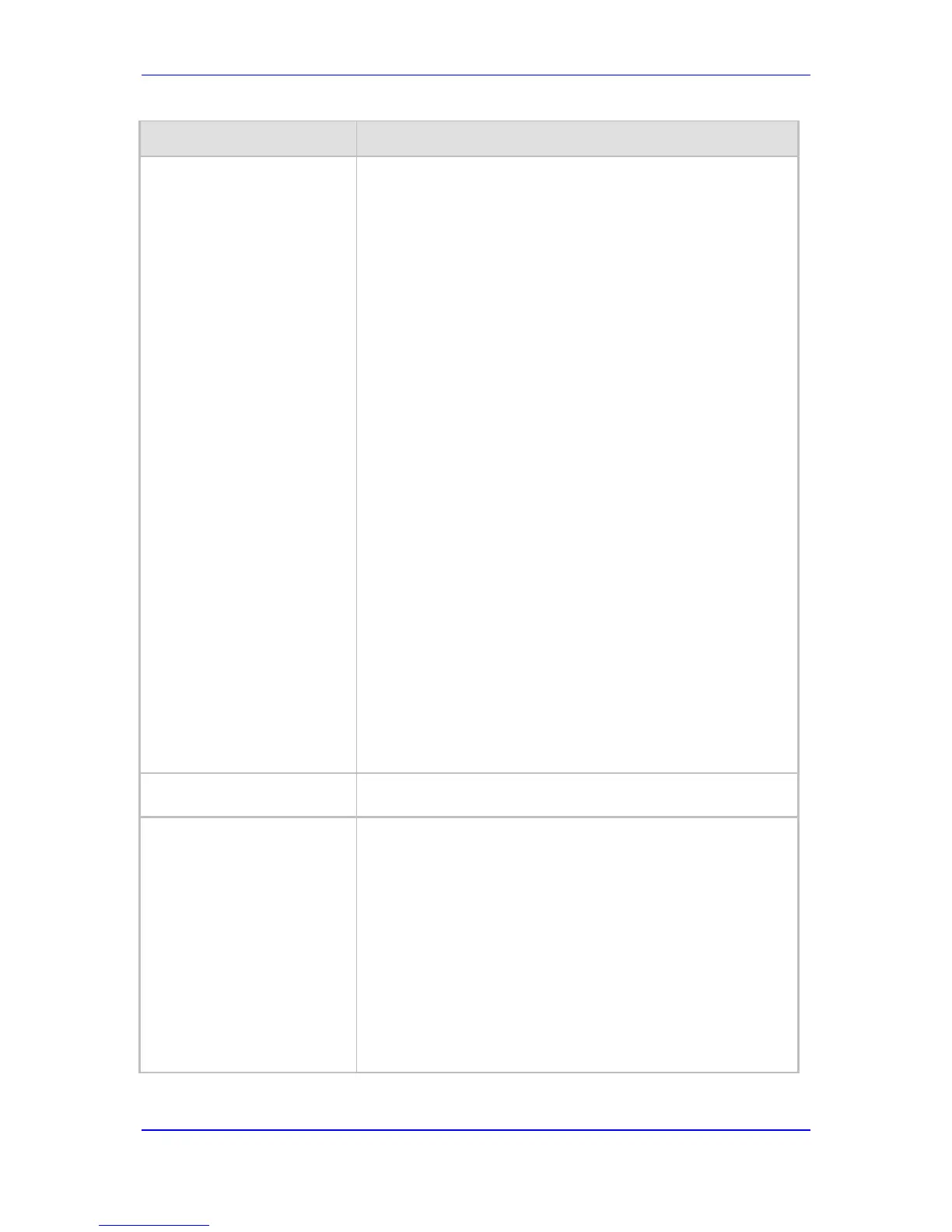Note: This option is applicable only to the Korean variant.
[128] DIAL WITH KEYPAD = The device uses the Keypad IE
to store the called number digits instead of the CALLED_NB
IE.
Note: This option is applicable only to the Korean variant
(Korean network). This is useful for Korean switches that don't
accept the CALLED_NB IE.
[256] STORE CHAN ID IN SETUP = The device forces the
sending of a Channel-Id IE in an outgoing Setup message
even if it's not required by the standard (i.e., optional) and no
Channel-Id has been specified in the establishment request.
This is useful for improving required compatibility with
switches. On BRI lines, the Channel-Id IE indicates ‘any
channel’. On PRI lines it indicates an unused channel ID,
preferred only.
[572] USE A LAW = The device sends G.711 A-Law in
outgoing voice calls. When disabled, the device sends the
default G.711-Law in outgoing voice calls.
Note: This option is applicable only to the E10 variant.
[1024] = Numbering plan/type for T1 IP-to-Tel calling numbers
are defined according to the manipulation tables or according
to the RPID header (default). Otherwise, the plan/type for T1
calls are set according to the length of the calling number.
[2048] = The device accepts any IA5 character in the
called_nb and calling_nb strings and sends any IA5 character
in the called_nb, and is not restricted to extended digits only
(i.e., 0-9,*,#).
[16384] DLCI REVERSED OPTION = Behavior bit used in the
IUA interface groups to indicate that the reversed format of the
DLCI field must be used.
Note: When using the ini file to configure the device to support
several ISDNOutCallsBehavior features, add the individual
feature values. For example, to support both [2] and [16]
features, set ISDNOutCallsBehavior = 18 (i.e., 2 + 16).
[ISDNOutCallsBehavior_x]
Same as the description for parameter ISDNOutCallsBehavior,
but for a specific trunk ID.
Web: ISDN NS Behaviour 2
CLI: isdn-bits-ns-extension-
behavior
[ISDNNSBehaviour2]
Bit-field to determine several behavior options that influence the
behavior of the Q.931 protocol.
[8] NS BEHAVIOUR2 ANY UUI = Any User to User
Information Element (UUIE) is accepted for any protocol
discriminator. This is useful for interoperability with non-
standard switches.
[16] NS BEHAVIOUR2 DISPLAY = The Display IE is accepted
even if it is not defined in the QSIG ISDN protocol standard.
This is applicable only when configuration is QSI.
[64] NS BEHAVIOUR2 FAC REJECT = When this bit is set,
the device answers with a Facility IE message with the Reject
component on receipt of Facility IE with unknown/invalid
Invoke component. This bit is implemented in QSIG and ETSI
variants.

